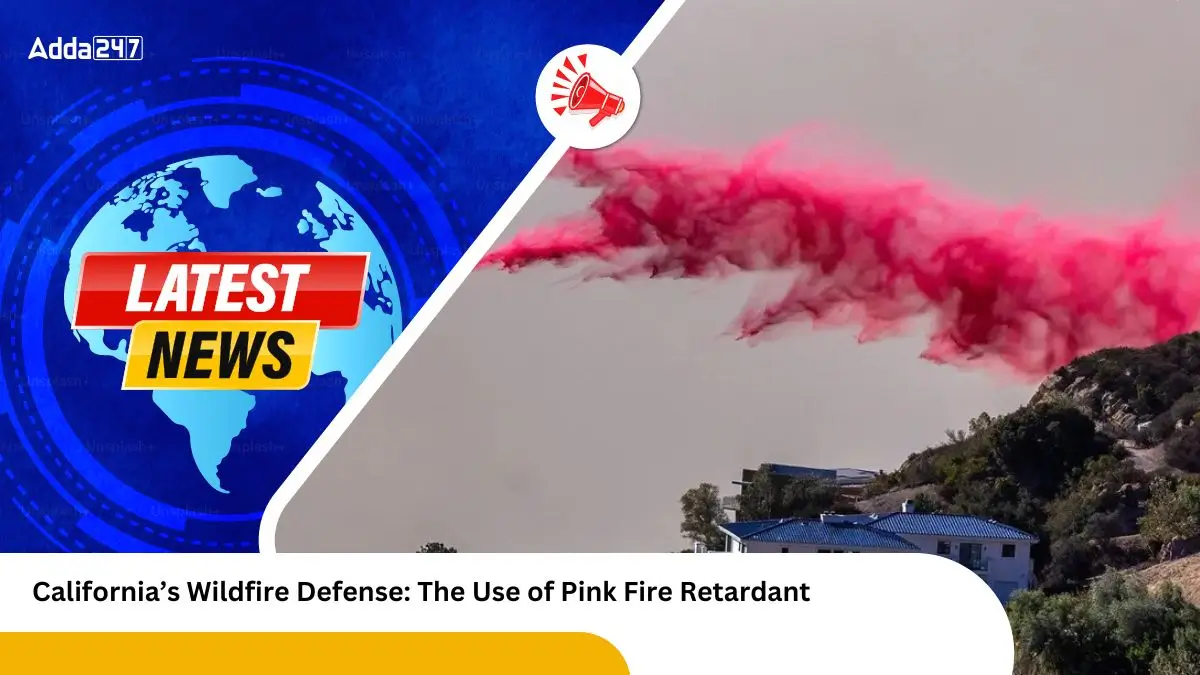As wildfires continue to rage across Southern California, authorities are using planes to drop bright pink fire retardant to control the spread of the flames. This long-standing method of firefighting is becoming increasingly scrutinized for its environmental impact. While pink fire retardant has been in use for decades, growing concerns over its effectiveness and harmful effects on the environment have sparked a debate. Below is an overview of what pink fire retardant is, how it works, and the environmental concerns associated with its widespread use.
Key Points about Pink Fire Retardant
What is it?
- Fire retardant is a chemical mix used to slow or stop the spread of fires.
- The most commonly used fire retardant in the U.S. is Phos-Chek, a slurry primarily composed of ammonium polyphosphate, which does not evaporate like water.
- The pink color is added to make it more visible against the landscape, helping firefighters to create fire lines and track the application area.
How Does it Work?
- The fire retardant is sprayed ahead of the fire to coat vegetation and prevent oxygen from fueling the flames.
- The pink color enhances visibility, helping firefighters to track the application of the retardant.
Environmental Concerns
- Toxic Metals: The fire retardant contains metals such as chromium and cadmium, which are toxic to both humans and the environment. These can accumulate in waterways, posing a threat to aquatic life.
- Health Risks: These metals are linked to cancer, kidney, and liver diseases in humans.
- Water Pollution: The chemicals from fire retardant can enter rivers and streams, polluting the water and harming wildlife.
- Effectiveness: Research has raised questions about the actual effectiveness of aerial retardants, as they depend on several environmental factors (e.g., weather, terrain, fuel type). Some experts argue that the windows for their effectiveness are narrowing due to climate change.
Usage and Impact
- Between 2009 and 2021, more than 440 million gallons of fire retardant were released on federal, state, and private lands in the U.S.
- A study by the University of Southern California (USC) found that over 400 tons of heavy metals were released into the environment during this period.
Debate and Dispute
- Environmentalists raise concerns about the growing pollution due to fire retardant use.
- The federal government and Perimeter Solutions (the company that manufactures Phos-Chek) dispute these claims, defending its safety and necessity in wildfire control.
| Summary/Static | Details |
| Why in the news? | California’s Wildfire Defense: The Use of Pink Fire Retardant |
| What is Pink Fire Retardant? | A chemical mix, mainly ammonium polyphosphate, used to slow or stop fires. |
| Main Use | Sprayed ahead of the fire to coat vegetation and prevent oxygen from fueling flames. |
| Color | Pink to improve visibility for firefighters to track and create fire lines. |
| Environmental Concerns | Contains toxic metals like chromium and cadmium, which pollute water and harm aquatic life. |
| Health Risks | Linked to cancer, kidney, and liver diseases in humans. |
| Water Pollution | Contaminates rivers and streams, affecting ecosystems. |
| Effectiveness | Effectiveness depends on weather, terrain, and fire conditions, with diminishing effectiveness due to climate change. |
| Amount Used (2009-2021) | Over 440 million gallons of fire retardant released in the U.S. |
| Toxic Metal Release | 400 tons of heavy metals were released during the same period, impacting the environment. |
| Debate | Experts and manufacturers are divided over the risks and necessity of its use in wildfire control. |



 ISRO Launches RESPOND Basket 2025, Calls...
ISRO Launches RESPOND Basket 2025, Calls...
 LVM3-M6 Rocket Set to Launch on December...
LVM3-M6 Rocket Set to Launch on December...
 Michaela Benthaus to Make History as Fir...
Michaela Benthaus to Make History as Fir...







